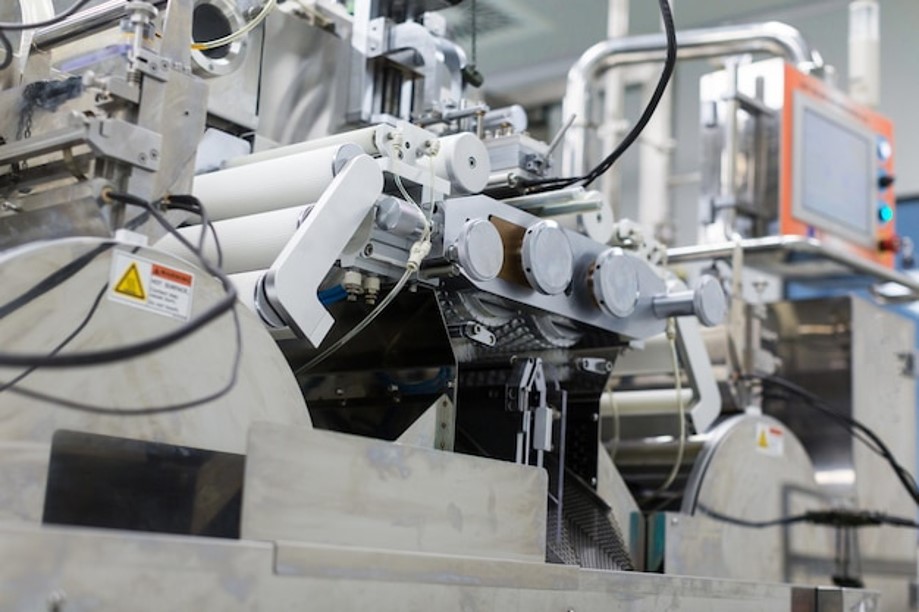The Company
This company is an integrated subsidiary of an MNC headquartered in Switzerland. The group comprises three production and development units in Switzerland, a plant in China, and a Portuguese unit. Its primary focus is producing small appliances as an OEM manufacturer.
With a history dating back to 1989, the company established itself at its current location and has developed various appliances over the years. However, it specializes in coffee machines, ranging from filter, espresso, and capsule machines to automated coffee machines representing its core business.
The company employs approximately 1,250 employees, considered the county’s largest private employer. Its core corporate values include customer focus, teamwork, employee recognition, and continuous improvement. Its informal approach is a valued aspect of the company, without compromising on rigor and excellence in processes.
In this case study, we will explore this company’s journey and challenges faced, analyzing how its values and commitment to quality contributed to its success and reputation in the small appliances market.
The Challenge
The project that focused on setting up a continuous improvement culture arose from the group’s need to enhance its competitiveness during a period of decline. This situation represented an excellent opportunity for the company to consolidate its organization and be prepared for future challenges. Some aspects were prioritized to achieve this, such as productivity, quality, results, improvement dynamics, culture, and customer service.
Additionally, this project represented a unique opportunity to create conditions for space optimization, enabling a significant increase in production capacity and substantial business volume growth.
To meet this challenge, the following objectives were defined:
Increase in Assembly Area Productivity
One proposed objective was a 30% increase in assembly area productivity. To achieve this, the creation of flow in production was aimed at implementing “one piece flow” in finished product lines and pre-assembly areas. In this context, setup times were also covered so that they were less than 1 minute between different finished product references. Regarding internal logistics, creating component supermarkets, production leveling, and adopting a standardized supply model were contemplated.
Furthermore, training for new employees was planned to ramp up productivity in the new lines.
Stock Coverage Reduction
Another established goal was a 30% reduction in stocks, using the SMED method to decrease setup times in injection. Tools were developed to support the planning of injection machines and the component purchasing process.
Increase in OEE
The company intended to increase the injection machines’ Overall Equipment Efficiency (OEE) by 5%. Total Productive Maintenance (TPM) would be implemented to reduce equipment downtime.
Culture Improvement
In addition to operational improvements, a fundamental goal was to create an authentic continuous improvement culture at all levels of the organization. In this context, a system of improvement suggestions would be implemented so that all employees could actively participate in the company’s continuous improvement process.
This challenge required a structured approach to continuous improvement in all areas of the organization to maximize operational efficiency, reduce waste, and increase the quality of products and services.
The Approach
To achieve the objectives mentioned earlier, the following strategic initiatives were adopted:
Daily KAIZEN™
- Organization by natural teams: 56 teams were created, and 100 daily meetings were held.
- Workspace organization: the 5S methodology was implemented in the whole plant, industrial and office spaces.
- Standardization: the processes were standardized, and a skills matrix and training plan were developed.
- Team autonomy: structured problem-solving tools were implemented and provided.
Daily Process Confirmation Dynamics
- Kamishibai between areas and Gemba Walks by management.
- KAIZEN™ audits for support and follow-up.
Hoshin Planning and Review
- Annual Hoshin planning and monthly Hoshin review: a strategic approach to planning and review was adopted to guide the company’s goals and actions.
Line and Layout Design
- Layout design, 4 new finished product lines, and 11 pre-assembly areas to optimize production flow and increase efficiency.
Deployment of internal logistics in assembly and injection areas
- Create component supermarkets.
- Implement Mizusumashi for efficient supply.
- Production leveling to improve process fluidity.
- Reorganize the warehouse to optimize stock management.
SMED Methodology Implementation
- Optimize injection planning and application of SMED in 84 injection machines, considering approximately 2,000 molds.
- Develop tools for injection planning, GANTT, reorder point, and batch size.
Applying the TPM Model
- Deploy autonomous and preventive maintenance standards in injection machines and molds.
These measures were implemented in an integrated and comprehensive manner, aiming to improve productivity, quality, and process efficiency and promote a continuous improvement culture.
Results
After implementing the strategic measures described above, the company achieved some of these significant results:
- An increase of 27% in the average productivity in the four new finished product lines, compared to the old lines. This improvement demonstrates the positive impact of the changes implemented in the production process.
- General productivity increase of 33% in pre-assembly. The increase highlights the efforts to improve efficiency and optimize assembly processes.
- Significant stock reduction:
- 17% drop in the injection area.
- 35% decrease in the pre-assembly area.
- An increase of 7% in the injection machines OEE, demonstrating the implemented actions’ effectiveness in optimizing performance and reducing machine downtime.
- Training and certification of all plant teams – production and office – in the four levels of Daily KAIZEN™, with a result above 75%. This certification reinforces teams’ commitment and ability to improve their processes continuously.
All these results show the benefits and positive impact of the implemented actions. These achievements contributed to reinforcing competitiveness, increasing operational efficiency, reducing costs, and consolidating a CI culture within the organization.
The implementation of these Lean and KAIZEN™ methodologies took place in different ways across the group’s factories. Nevertheless, within the group, the results achieved and solutions adopted in this company have become a benchmark.
See more on Discrete Manufacturing
Find out more about transformation in this sector
See more on Maintenance
Find out more about improving this business area
